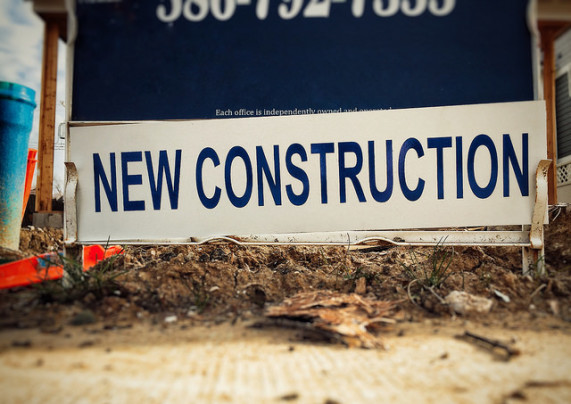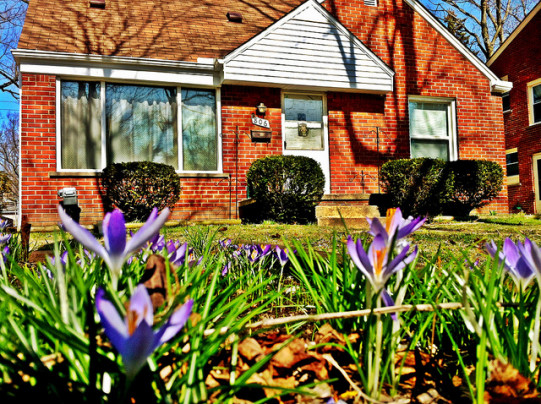Whenever the topic of millennial home buyers comes up, the assumption is that they’re all searching for urban lofts and using the latest tech to find them. In other words, the next generation of home buyers isn’t interested in the old way of doing things. However, survey after survey seems to contradict those assumptions. In fact, recent surveys have found millennials are far more traditional than most assume. For example, a recent survey of Americans between the ages of 18 and 34 found large majorities said they’d prefer to work with a local real-estate agent and lender as opposed to online services when searching for a house to buy. Doria Lavagnino, co-founder and president of CentSai, the company behind the survey, says younger buyers want the comfort and reassurance of a recommendation from someone they trust. “Buying a home for the first time is daunting, and working with a local agent – particularly an agent referred by a parent or friend – could provide peace of mind.” The survey also found a majority of respondents said they plan to buy in the next two years and – among those who said they don’t plan on buying – nearly 70 percent said it’s because they can’t afford to, rather than because they prefer to rent. More here.
Archive for April 2017
Builders Have Confidence In New Home Market
When builders feel confident, they build more homes. And, as more homes are built, the housing market becomes more balanced. In other words, how builders feel about the market for new homes is an important factor in whether prices rise or fall and what buyers and sellers can expect from their local real estate market. Because of this, the National Association of Home Builders conducts a monthly survey of builders and ranks their responses on a scale where any number above 50 indicates more builders view conditions as good than poor. Because builders’ views are considered an important barometer, the index is closely watched by industry experts. In April, the NAHB’s index scored a 68, proving builders remain optimistic. Granger MacDonald, NAHB’s chairman, says that though there was a slight dip from March, builders are still confident. “Even with this month’s modest drop, builder confidence is on very firm ground, and builders are reporting strong interest among potential home buyers,” MacDonald said. How many new homes are built this year will have a significant affect on affordability conditions and how favorable conditions are for prospective home buyers. More here.
What Rising Optimism Means For Real Estate
According to the Survey of Consumers conducted by the University of Michigan, Americans are feeling more optimistic about economic conditions. In fact, Richard Curtin, Survey of Consumers chief economist, says optimism is at its highest point since 2000. “The Current Economic Conditions Index rose to its highest level since 2000 and nearly reached its all-time peak of 121.1 set in 1999,” Curtin said in the most recent release. So how will all that optimism affect the housing market this year? A lot depends on builders and current homeowners. So far this year, buyer demand has been high and the number of homes available for sale has been lower than usual. As economic confidence builds, however, builders may start building more new homes to meet the growing demand. Current homeowners could also decide that it’s a great time to sell a house and put their home up for sale. If this happens and inventory begins to climb, the market will become more balanced, prices will begin to moderate, and home sales will increase. In other words, as long as Americans are feeling confident about their financial situation, there’s a good chance they’ll be thinking about a move. More here.
What Home Buyers Want Most This Spring
Home buyers, through the years, tend to value the same things. It makes sense. Though styles may vary and specific preferences may change, at the end of the day, we all want the same things out of our homes. Generally speaking, it all comes down to storage, space, and a sense of security. This year is no different. For example, a newly released survey of hopeful spring home buyers found that privacy was the top goal cited when asked what they valued most. Privacy even beat out family needs, which came in a close second. As for storage and space, garages and backyards were also near the top of the priorities list for most buyers. Demographically, younger buyers were more likely to want a large yard, while garages were particularly popular with buyers over the age of 55. Either way, it’s clear that this year’s house hunters have common needs. There is one need, however, that buyers share more than any other. When asked which room was most important to them, 80 percent of respondents named the kitchen. For obvious reasons, the kitchen is consistently ranked high atop buyers’ wish lists. After all, no matter how young or old a buyer is, they need to eat – which is why a good kitchen is always a draw for home shoppers. More here.
Rates Fall To Lowest Level So Far This Year
According to the Mortgage Bankers Association’s Weekly Applications Survey, mortgage rates were mostly down last week. Rates fell for 30-year fixed-rate mortgages with conforming loan balances, loans backed by the Federal Housing Administration, and 15-year fixed-rate mortgages. Rates for jumbo loans were unchanged from the week before. The decline brought mortgage rates to their lowest level so far this year. Michael Fratantoni, MBA’s chief economist, told CNBC the spring season is off to a good start. “The spring housing market is off to a solid start,” Fratantoni said. “Despite the relatively weak job report for March, job growth is averaging almost 180,000 [a month] so far this year, providing a strong support for the home purchase market.” The survey found demand for loans to buy homes was up 3 percent from the week before and is now 3 percent higher than at the same time last year. Refinance demand, on the other hand, was virtually unchanged from the previous week, despite falling interest rates. The MBA’s weekly survey has been conducted since 1990 and covers 75 percent of all retail residential mortgage applications. More here.
Townhomes Make A Comeback With Home Buyers
Historically, townhouses were the city homes the wealthy used when they needed to be in town for social events. These days, however, they’re popular with a wider array of buyers and there are a number of reasons why. First off, their small footprint and vertical design means they require less maintenance and are more likely to be located in trendier, walkable neighborhoods close to amenities and jobs. For that reason, townhouses appeal to both first-time buyers and baby boomers looking to downsize. Townhomes are also appealing because they tend to sell for less than the typical, detached single-family home. That combination of a lower price tag and the ability to be close to retail, entertainment, schools, and amenities have led to a bit of a townhouse building boom over the past few years. In fact, recent numbers from the National Association of Home Builders show a nearly 18 percent increase in the number of townhomes built between 2014 and 2015. But though it may not be the first time they’ve experienced a wave of popularity since their 18th century heyday, with more and more Americans indicating a preference for them, they’re increasingly a desirable option for prospective buyers looking for a house to buy. More here.
Is It Better To Buy Now Or Save For Later?
For first-time home buyers, saving enough money for a down payment is among the top obstacles blocking their jump to homeownership. Where current homeowners can often use the sale of their house to help fund the upfront costs of buying another home, first timers have to come up with the money by budgeting and staying disciplined. But is it better to put off buying a home until you can come up with a full 20 percent down payment or should you buy now and put less down? This can be a complicated equation – especially since it ultimately depends on how much prices and mortgage rates rise or fall in the future. Despite this, a new calculator from mortgage insurer MGIC hopes to show new buyers that sometimes waiting a year or two to save up money can actually cost more. Vance Edwards, MGIC’s marketing program director, says that – while they don’t want to encourage anyone to buy before they can afford to – they want to help counter the notion that buyers have to save 20 percent before they can think about homeownership and help show that, not only are there other options, it sometimes costs more not to explore them. More here.







